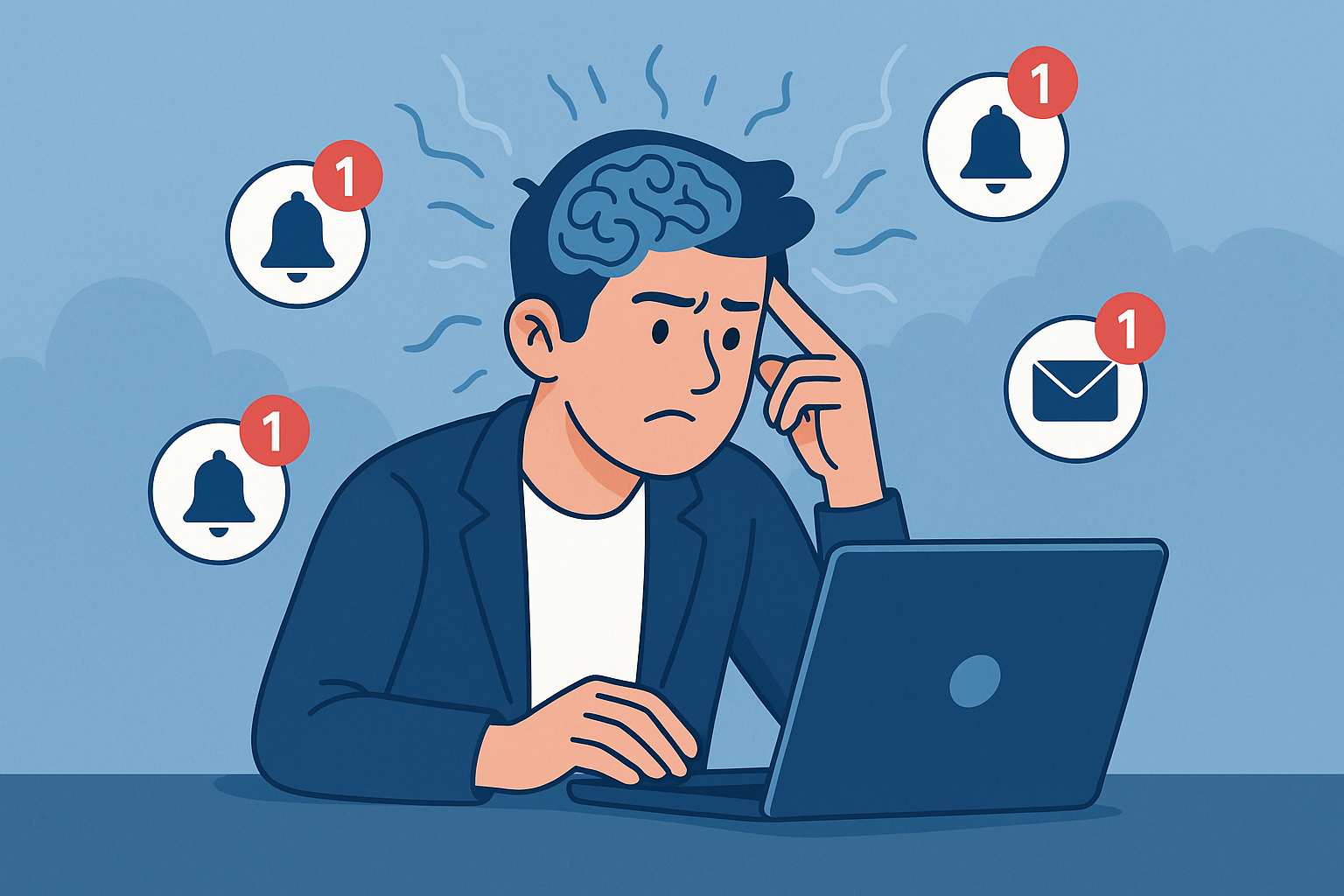Beyond Email: How Notifications Fuel Context Switching and Reduce Productivity
Explore how constant digital notifications, beyond just email, actively contribute to context switching, draining your focus and harming your daily productivity.

In a world of endless pings, alerts, and popups, it’s easy to feel like your focus is constantly under attack. What seems like a harmless Slack message or a quick email notification can spiral into a major productivity drain. That’s the hidden notifications context switching impact that most professionals don’t see until it’s too late.
Understanding this impact is critical for any team striving to do meaningful work in a distracted world. If you’ve been searching for the best Tools to Reduce Context Switching, notifications should be one of the first issues you tackle. They don’t just interrupt—they fundamentally reshape how we work, think, and perform.
How Notifications Disrupt Your Brain’s Focus
Notifications are engineered to grab attention. But the real cost comes after they’ve succeeded. Every time you get pulled away from your current task, your brain has to refocus. This mental shift, known as context switching, comes with a time penalty. Research shows it can take up to 25 minutes to fully regain focus after an interruption.
Even worse, frequent context switching leads to cognitive fatigue. Your brain becomes slower at processing new information, making mistakes more likely. So when you think you’re “just checking” a message or alert, you’re actually derailing your mental momentum.
From Flow to Fragmentation: The Downward Spiral
Have you ever lost track of time while working deeply on something? That’s called flow state. It’s where your best thinking happens. Unfortunately, even a single notification can break that flow and send you spiraling into a cycle of fragmented attention.
Let’s say you’re drafting a presentation. A Slack notification pops up. You check it, respond briefly, and then return to your slides. But now you’ve lost your train of thought. So you re-read the last paragraph, hesitate, check your email... and suddenly you’re 15 minutes behind. That’s the real-world impact of notifications and context switching.
Common Workplace Distractions Fueled by Notifications
- Slack pings that create urgency, even for non-urgent topics
- Email alerts that pull you out of focused writing or analysis
- Meeting reminders that break flow even before the meeting starts
- Social notifications disguised as work updates from LinkedIn or team tools
Each small alert adds up. And collectively, they create an environment where meaningful work becomes harder to start and nearly impossible to sustain.
Smarter Settings for Smarter Focus
You don’t need to shut everything off. You just need to regain control. Here are three strategies to start with:
- Batch Notifications
Turn off real-time alerts and check them at scheduled intervals. This approach works well for email, Slack, and even project management tools.
- Use Do Not Disturb Windows
Set calendar blocks for focused work. Many apps like Slack or Microsoft Teams respect these modes and pause non-critical alerts.
- Customize Notification Types
Only allow pings for high-priority mentions or tags. Mute general channels and turn off promotional updates that sneak into your workflow.
These strategies take minutes to implement but offer massive returns in focus and clarity.
Why This Matters More Than Ever
Remote and hybrid work have blurred the boundaries between personal and professional time. Notifications no longer follow a 9–5 schedule, they arrive all day, every day. If left unmanaged, they turn your workday into a never-ending scroll of context switching.
Team leaders must recognize this challenge not just as a personal issue but as a structural one. If your workplace rewards instant responses more than thoughtful output, you’re training your team to prioritize noise over results.
Final Thoughts
The notifications context switching impact is real and costly. The more interruptions you allow, the harder it becomes to stay productive, creative, and focused. While turning off notifications entirely isn’t always realistic, taking a strategic approach to how and when you receive them can dramatically improve your daily performance.
Your ability to focus is one of your most valuable assets. Protect it with tools, habits, and a culture that prioritizes intentional work over reactive urgency.
If you're looking to build a smarter workflow across your organization, begin by exploring Tools to Reduce Context Switching and learn Why Multitasking Drains Focus so your team can stay aligned, energized, and effective.
FAQs: Notifications and Context Switching
What is context switching and why is it harmful?
Context switching is the act of shifting your attention between tasks. It causes delays, increases mental fatigue, and reduces the quality of your work.
How do notifications lead to context switching?
Notifications interrupt your current focus and force your brain to shift attention. Even brief alerts can cause lingering distractions and slow your productivity.
Should I turn off all notifications?
Not necessarily. You should customize your settings to allow only high-priority notifications during focused work hours. Batch the rest.
Are certain apps worse than others for interruptions?
Apps with real-time alerts like Slack, Teams, and email clients tend to cause the most disruption if not managed properly.
How can teams reduce notification-related distractions?
Set clear norms for response time, use status settings, encourage async communication, and use collaboration tools that allow for muted periods.


